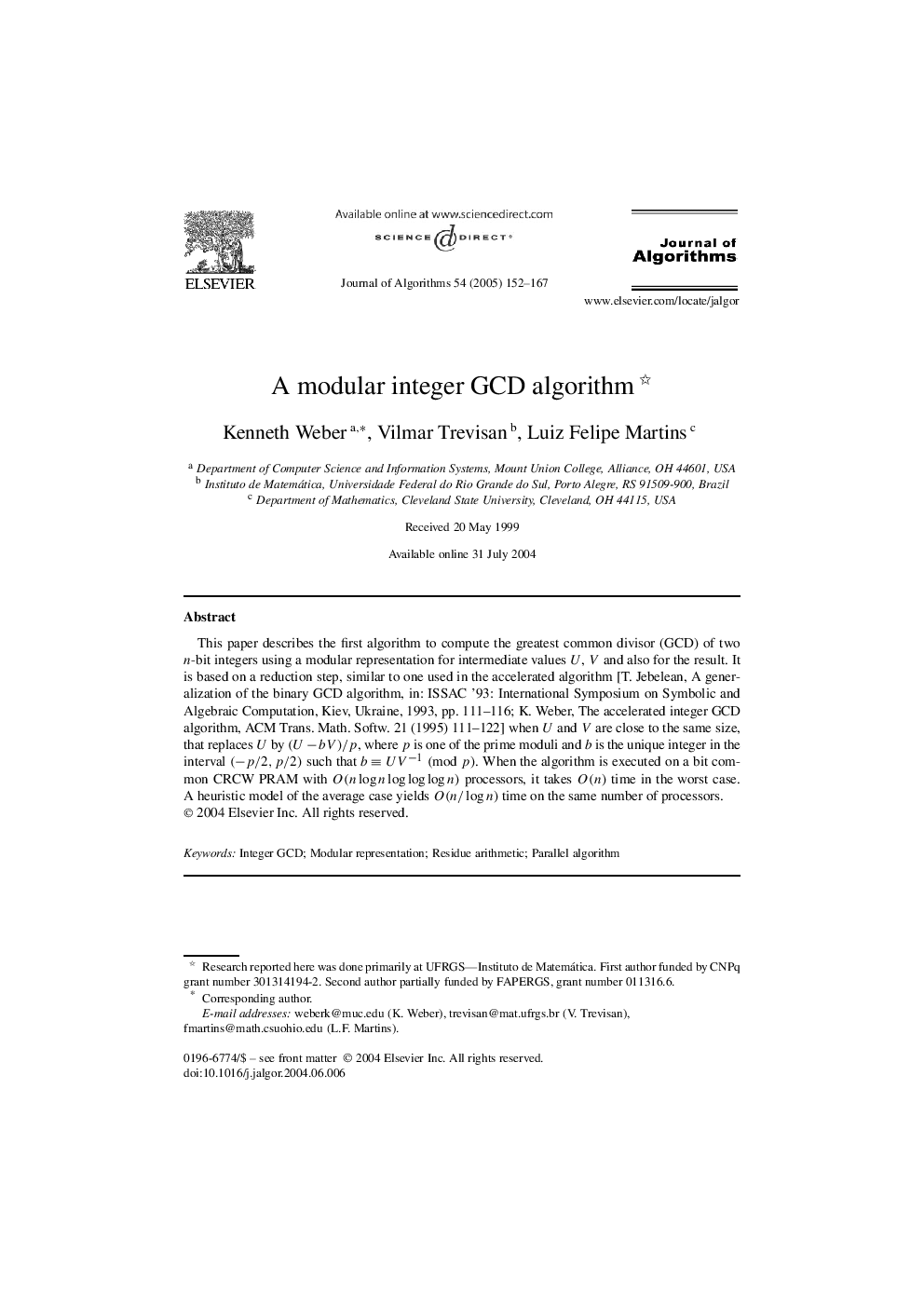| Article ID | Journal | Published Year | Pages | File Type |
|---|---|---|---|---|
| 9657021 | Journal of Algorithms | 2005 | 16 Pages |
Abstract
This paper describes the first algorithm to compute the greatest common divisor (GCD) of two n-bit integers using a modular representation for intermediate values U, V and also for the result. It is based on a reduction step, similar to one used in the accelerated algorithm [T. Jebelean, A generalization of the binary GCD algorithm, in: ISSAC '93: International Symposium on Symbolic and Algebraic Computation, Kiev, Ukraine, 1993, pp. 111-116; K. Weber, The accelerated integer GCD algorithm, ACM Trans. Math. Softw. 21 (1995) 111-122] when U and V are close to the same size, that replaces U by (UâbV)/p, where p is one of the prime moduli and b is the unique integer in the interval (âp/2,p/2) such that bâ¡UVâ1(modp). When the algorithm is executed on a bit common CRCW PRAM with O(nlognlogloglogn) processors, it takes O(n) time in the worst case. A heuristic model of the average case yields O(n/logn) time on the same number of processors.
Related Topics
Physical Sciences and Engineering
Computer Science
Computational Theory and Mathematics
Authors
Kenneth Weber, Vilmar Trevisan, Luiz Felipe Martins,
